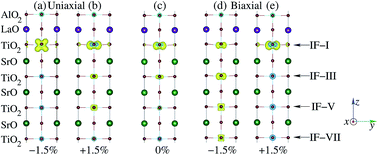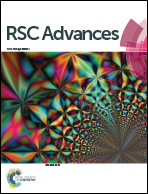The role of uniaxial strain in tailoring the interfacial properties of LaAlO3/SrTiO3 heterostructure
Abstract
The two-dimensional electron gas (2DEG) at the (LaO)+1/(TiO2)0 n-type interface in LaAlO3/SrTiO3 (LAO/STO) heterostructures (HS) opens up new opportunities in next-generation nanoelectronic devices because of its unique and tunable physical properties. In this respect, strain plays an important role in tailoring the 2DEG properties of STO-based HS systems. Our first-principles calculations reveal that a uniaxial strain along the [100]-direction of the STO substrate significantly affects the chemical bonding of LAO and STO near the interfacial region, which can further alter the interfacial electronic properties. We find that uniaxial tensile strain can considerably increase the interfacial charge carrier density, which is consistent with the recent experimental findings in [Moler et al., Nat. Mater., 2013, 12, 1091]. Our results also indicate that uniaxial compressive strain on STO can lead to higher interfacial charge carrier density and larger magnetic moments than uniaxial tensile strain, and further that the 2DEG in the compressively strained systems displays superior charge confinement in the c-direction. For the sake of comparison, the effects of ab-plane biaxial compressive and tensile strains applied on the STO substrate were also investigated. It is found that biaxial tensile strain improves the interfacial electronic properties and magnetic moments, while biaxial compressive strain shows the opposite effect.



 Please wait while we load your content...
Please wait while we load your content...